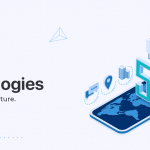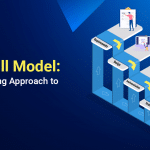Software development lifecycle (SDLC) undoubtedly sounds like a highly complex process. Well, it could be, if we do not comprehend its whereabouts.
As complicated as it sounds, SDLC is an essential pathway for online businesses that are looking to grow their customer reach. This lifecycle encourages enterprises to develop customized solutions in order to meet user requirements.
Therefore, if you want your digital business to run effortlessly, ensure that you are implementing the software development life cycle methodologies precisely.
But how do you do that?
Do not worry; you will find everything that you need to know about SDLC in this article. We have discussed all the significant models and phases required throughout the SDLC process.
In this article, we will talk about:
- What is the Software development Life Cycle?
- Why is SDLC essential for your online business?
- How does SDLC work?
- What are the 7 phases in SDLC?
- Primary challenges faced throughout the SDLC.
- Models of Software development Life cycle.
What is the Software development Life cycle?
When we talk about software development, the process is all about imposing a structure on your development cycle. This structure will help you come up with high-quality software that meets customers expectations. This also ensures that your development cycle is within the defined time frame and cost.
The entire Software development life cycle consists of a detailed plan that tells us how to build, design and maintain a specific software. We will discuss this plan in the form of several developmental phases.
But before we take a detailed view of the phases, let’s understand the purpose of SDLC.
Why is SDLC essential to your online business?

With a defined development life cycle, you will be able to create custom software solutions for various operating systems. Not only that, SDLC brings along endless benefits to your business development process.
Below are some of the primary reasons why you need SDLC methodologies to develop software systems:
- SDLC provides a defined estimate for project planning, scheduling, developing and deploying.
- You get a framework for a standard set of deliverables and activities.
- SDLC is the perfect mechanism for project tracking and control.
- Your client relations are more likely to improve with a structured SDLC.
- SDLC helps you decrease the project management plans overhead and other risks.
- The visibility of project planning increases to your stakeholders.
Moreover, it is always safe to move ahead with a predefined plan rather than working on estimations.
Now that we have discovered the purpose of implementing SDLC, here’s how we can use it.
How does SDLC work?
SDLC works by controlling the cost of your software development while simultaneously maintaining its quality and production time. These are two apparently divergent goals that can be achieved by following a plan. This plan helps you remove the typical pitfalls of your software development project. You can start by analyzing existing systems that can create problems.
In case you find any issue, consider carrying out a new system. The system includes basic SDLC phases such as Analysis, planning, designing, developing, testing and deploying.
The best part here is, you get to anticipate your cost issues. It is essential to keep in mind that SDLC emphasizes more on the testing phase. Since it’s a repetitive methodology, keep your strong focus on the code quality at every cycle. Many enterprises fail at the testing phase due to their minimal efforts in code analysis. Therefore, make sure you rework your quality before it’s too late!
We have been talking about these software development Life cycle phases from the start. I am sure you’d now want to explore them.
Let’s get right into it.
7 Phases in Software Development Lifecycle

The entire SDLC process is categorized in the following stages;
- Requirement collection and Analysis
- Feasibility test
- Design
- Coding
- Testing
- Deployment/Installation
- Maintenance
Below is the detailed review of all the seven SDLC phases:
Requirement collection and analysis
This analysis is generally carried out by the senior members of the team. It involves planning for the quality assurance needs and recognizing the risks that can impact the development process.
You get a crystal clear picture of the scope of your project along with objectives, directives and the anticipated issues. Isn’t it better to know what can challenge your software development project in the timeline?
You can insert inputs from your stakeholders, developers and industry experts and learn the strengths and weaknesses of your system. Remember, the goal should be an improvement.
Feasibility test/Planning
Once you are done with your analysis, the next step is to define your software needs. This phase includes a Software requirement specification, also known as SRS doc. This doc has everything that needs to be designed and created during the SDLC process.
There are 5 kinds of feasibility checks.
- Economic
Will the project complete within the budget?
- Legal
Does this project follow certain regulatory compliances?
- Operation
Can we develop operations expected by the client?
- Technical
Will our current system support the project software?
- Schedule
How long will it take to complete the project?
- Design:
This phase defines the overall architecture of the system.
Two kinds of design documents are created in this phase:
- HLD (High-Level Design)
- It consists of the name and summary of the module.
- Overview of the functionality of each module.
- Relationship and dependencies between modules.
- Database tables with their key components.
- Architectural diagrams with technical details.
- LLD (Low-Level Design)
- It consists of the functional logic of the modules.
- Type and size of the database.
- Details of the interface.
- All types of dependency issues.
- List of error messages.
- Input and output of every module.
Coding
Once you accomplish the designing phase, the developers can start building the system using their preferred programming language. In the coding phase, you can divide the tasks into specific units or modules and sign them to your programmers.
Coding is undoubtedly the most extended phase of the Software development life cycle. You will also need various programming tools such as an interpreter, debugger and compiler to generate and implement the code. You may also want to seek technical insights for these tools from a reliable software development company.
Testing
Now that you have successfully surpassed the coding stage, it is time to deploy your software in the testing environment. Every functionality in your system will be tested here. As mentioned earlier, give your full attention to testing since this decides whether your software works for your user needs or not.
Your Q/A and testing team might find some threats here. In such cases, the software is sent back to the development team to fix the bugs and other issues and apply for re-testing. This process continues until your software becomes threat free and stable.
Deployment/ Installation
In the deployment process, the final software is released. However, before you do that, check if there is any negative feedback and that your system is error-free.
Maintenance
Your software system is now available to customers. Apart from this, three major activities are included in the maintenance stage:
- Bug fixing:
Bugs are reported if the user finds any.
- Upgrading:
Timely upgrading your software to the newer versions.
- Enhancing:
Adding new features with time into the existing software.
So that’s how the SDLC process is performed. The ultimate objective of following the above phases is to keep meeting the customer demands.
While you follow these phases, there are chances for you to still face some challenges. And this is why we have mentioned some of the most common problems faced by enterprises during the software development process.
Primary challenges faced throughout the SDLC

- While you are in the analysis phase, recreating new logic systems is always a significant challenge. When you anticipate risk in your former logic, it becomes tough to come up with a new one that can efficiently deal with open end programming environments.
- Another typical challenge is developing a methodology that leads us to portable parallel software solutions. This means that your software should be equally compatible with other operating systems in case of migration.
- Designing a programming language that supports parallel computation and suits all your user requirements is another problem. Parallel computing is processing several calculations simultaneously.
- Custom software development is always a challenge. Adding complex and unique features to your software can be tiring and time taking. This is why, consider seeking help from a good software development company to smoothen out your tasks.
These are some of the usual problems faced by the developers. Now that we have addressed them, you can manage these issues beforehand for a smooth development run.
We have now covered everything that one needs to know about the Software development life cycle, except one!
There are several approaches to complete the life cycle. These approaches are also known as “SDLC Models.” They help you run the process as per your convenience. So how about we give a brief look at these models?
Popular Models of the Software development Life cycle!

The waterfall is the most widely accepted model in SDLC. To summarize this, the outcome of one phase becomes the input for another stage. It is document-intensive, where every stage requires a detailed document of the functions performed.
In this model, the phases are planned in a parallel environment. One is the verification phase, and the other one is the validation phase running simultaneously. Both the V-phases join at the coding stage.
The Agile model facilitates the continuous interaction of development and testing. Here, the entire project is categorized into several incremental units and combined at the end.
The spiral model is quite risk-driven. This methodology is the combination of design and development and rapid prototyping. Here, you can accomplish the best features of your prototype.
This model encourages all the resources in software development with very little or no planning. The threats are analyzed when they appear, and requirements are fulfilled on a time basis.
Big bang methodology can work on small projects and is ideal when the resources are unknown, or the release date is not given.
Besides these models, there are three other major SDLC models, such as RAD (Rapid application development) model, Iterative model and Incremental model. They focus on simplified implementation and require a very small set of planning. However, very limited organizations utilize them.
Final Thoughts
The software development life cycle is a systematic methodology that ensures the quality and structure of your product. This way, you can achieve short-term goals that are really going to help you in the long run. You can follow any approach for your SDLC process that suits you best.




